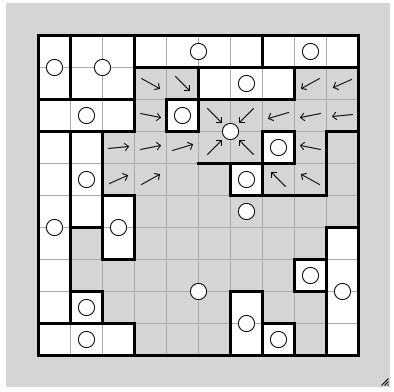First, we can start with all galaxies in the border, and close all the lines opposing to the dots in the border, as they can't both be in the center of their galaxy and in the border

Then, we can also close all the frontiers between two galaxies

By doing so, we create a new border that touches dots, so we can repeat the process

Then we can do some trial and error, for example, what if the red dot is three square high ? well, then his neighbors are affected, and we quickly see that there will be a problem on the right part of the board.

As it can't be this solution, we can safely close this galaxy, and see how it affected his neighbors. For example, we can see that the top right galaxy has to be 3 square long horizontal, as it's the only galaxy that can fit the leftmost square.
We can then try again, with another galaxy, ideally that have only two possible states, and if one does not work, go for the second one.

repeat again and again

Once all the tiny galaxies are closed, you have only big ones, and you have to close borders, then you have to use the fact that galaxies are symmetrical, So a galaxy can't extend to a place without doing the same symmetrically. Use this to see that some squares can't belong to given galaxies, and close borders knowing this new information.

You can also use the fact that some square belonging to a galaxy have borders, and draw them symmetrically, to create new borders

Finally, we are here















